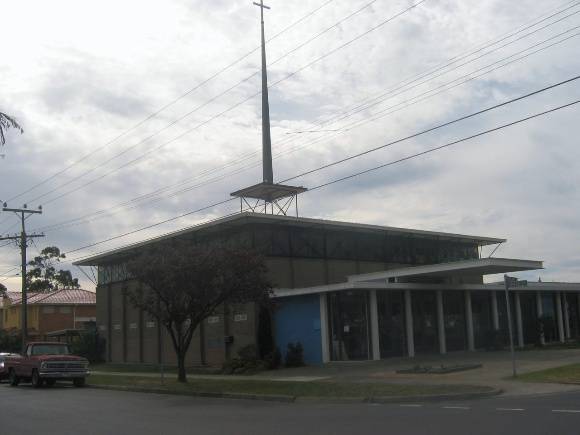| Back to search results » | Back to search page » |
|
ST GEORGES ANGLICAN CHURCH
Other NameSt George's Church of England Location32-34 Ralph Street, RESERVOIR VIC 3073 LevelIncluded in Heritage Overlay |
|
Statement of Significance
What is significant? The 2002 additions, including landscaping and signage, are not significant. How is it significant? Why is it significant? St George's Anglican Church at 32 Ralph Street, Reservoir is architecturally significant as a fine example of a Modernist church in Darebin. It is notable for its simple, yet striking and innovative form, which demonstrates the interest of the architects in geometric forms, first employed at St Faith's Burwood in 1957. The significance of the church is enhanced by its rarity value as one of just three Modernist churches in Darebin. (AHC criteria B.2, F.1) St George's Anglican Church at 32 Ralph Street, Reservoir is socially significant as as the centre of the Reservoir Anglican Parish and is a church that is known, used and valued by the local community. (AHC criterion G.1)
St George's Anglican Church at 32 Ralph Street, Reservoir, constructed in 1964, designed by the noted architectural firm of Mockridge, Stahle and Mitchell, is significant. It is a Modernist Anglican church built of steel and concrete, which isof a cubic form and displays structural expressionism in its use of a space frame truss roof thatappears to float above the building. A tall spire set on a raised platform is placed centrally above the roof.
St George's Anglican Church at 32 Ralph Street, Reservoir is of local historic, architectural and social significance to Darebin City.
Historically, St George's Anglican Church at 32 Ralph Street, Reservoir is significant as a representative example of a church that provides evidence of an important phase of suburban development of Reservoir after the Second World War. St George's Anglican Church at 32 Ralph Street, Reservoir is also significant as an important work of the noted Modernist church architects, Mockridge, Stahle and Mitchell. The design of the church reflects the changes in church design as a result of the influence of the Modern movement in the post-World War Two era. (AHC criteria A.4, D.2, H.1)
Group
Religion
Category
Church




